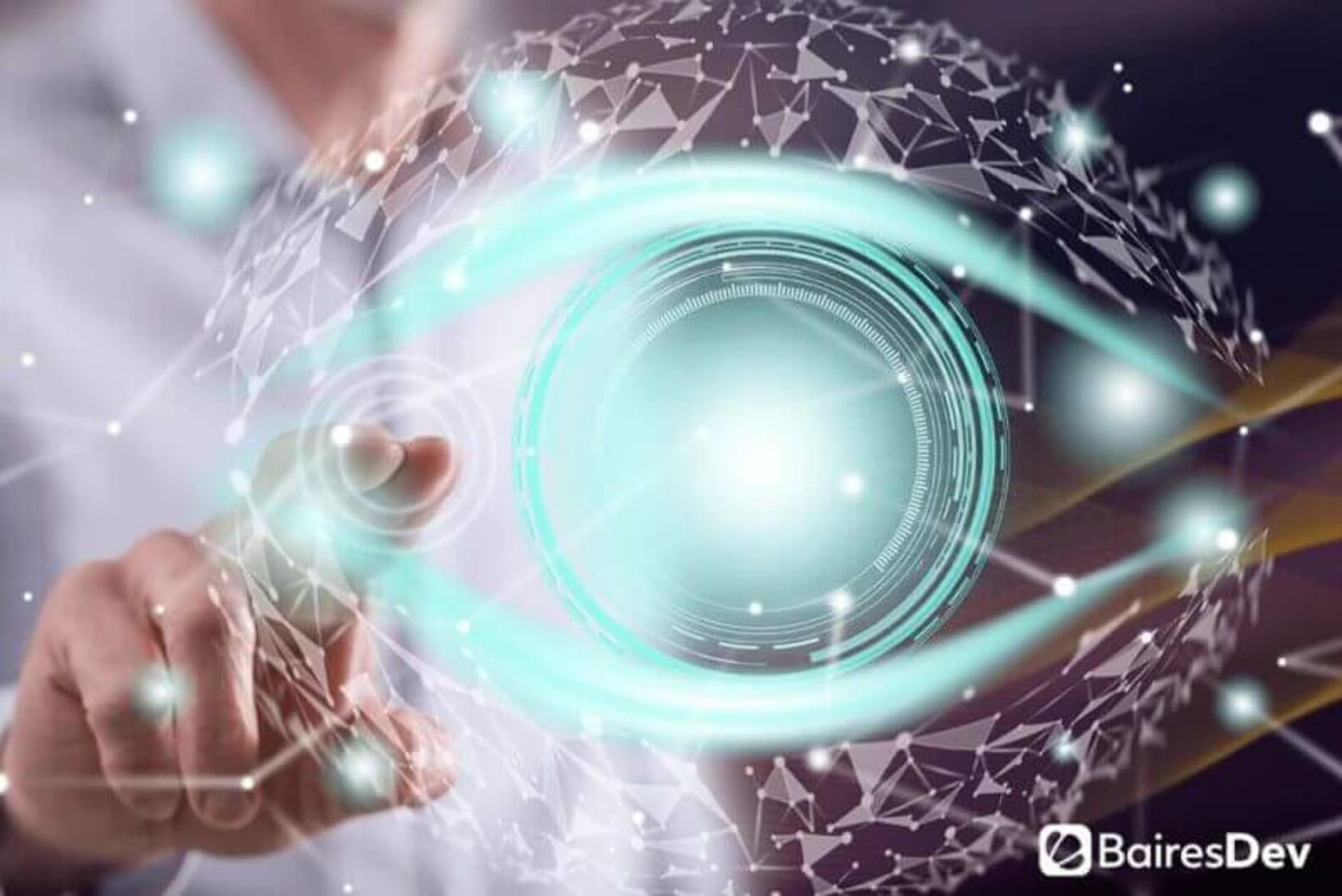Computer Vision Development Company
Accelerate your projects with custom Computer Vision solutions developed by our top 1% nearshore talent. Whether it's intuitive front-end interfaces or robust back-end architecture, we quickly assemble the ideal team for your needs—typically within two weeks.
500+ companies rely on our top 1% tech talent.
Computer Vision Development Services We Provide
Custom Computer Vision Development
Transform data into insights with Computer Vision software development customized to your exact needs. Our custom models help automate critical processes and improve decision-making accuracy, giving you a competitive edge.
We design, train, and deploy models using leading frameworks like TensorFlow and PyTorch. From refining data inputs to seamless system integration, we handle each step so your models deliver reliable, real-time performance at scale.
Computer Vision Image and Video Analysis
Want to see what your data isn’t telling you? Our Image and Video Analysis services uncover hidden insights from your footage.
We deploy deep learning models and computer vision tools to analyze images and video in real-time, tagging and filtering data to clarify every frame. From trend tracking to anomaly detection, our analysis equips you to spot production flaws, security risks, and customer behavior patterns.
Object Detection and Recognition
Spot, classify, and track objects in your visual data instantly. Our Object Detection and Recognition solutions help you transform raw video feeds into actionable insights.
Using models like YOLO and Faster R-CNN, we refine computer vision algorithms specifically for your data and performance goals. Our approach captures precise object details in real time and integrates with your tech stack to support everything from inventory tracking to safety monitoring.
Facial Recognition
Put security and personalization front and center by identifying every face in the room. Our Facial Recognition solutions simplify access control, verify identities in seconds, and craft personalized customer interactions.
Using advanced algorithms, we capture and analyze unique facial features in milliseconds, integrating directly with your existing systems. Fast, precise recognition that adds value to each interaction—whether it’s securing a facility, authenticating users, or delivering a personalized experience.
Optical Character Recognition (OCR)
Digitizing documents is just the start. With our OCR services, you can extract text instantly, convert scanned files, and automate data entry for smoother, faster workflows.
Our team applies industry-leading OCR tools to capture text from images, PDFs, and other formats—accurately processing every detail. From handling multi-language documents to capturing clear character recognition, we deliver OCR solutions that keep data flowing and reduce manual tasks throughout your operations.
Predictive Maintenance and Quality Control
Think: a crystal ball for your operations. Our Predictive Maintenance and Quality Control solutions predict wear and catch defects before they become problems, keeping everything on point.
We analyze real-time performance data to detect subtle shifts in equipment and quality metrics. This isn’t just maintenance—it’s proactive problem-solving. From spotting microscopic flaws to tracking equipment stress, we give you the insights to keep every piece of the puzzle running smoothly.
Rolls Royce case study

Key Things to Know About Computer Vision
Computer Vision Best Practices
High quality data and thorough preprocessing are the foundation for good Computer Vision results. Address data quality early to prevent issues during model training and improve accuracy.
Identify and correct errors, remove duplicates and handle missing values to avoid noise in the dataset.
Use data augmentation techniques like rotating or flipping images to enrich datasets and improve model robustness.
Standardize data formats and labels consistently to maintain clarity, especially in multi-class scenarios or complex tasks.
Regularly validate incoming data against predefined criteria to catch anomalies early and only high quality data enters the training pipeline.
Choosing the right model and training process is crucial for precision and performance in Computer Vision. Here’s how to make each step of model training count.
Select models based on the project’s complexity and data type. For example, YOLO is good for real-time detection, ResNet is good for accuracy.
Speed up training by using pre-trained models, which require less data and less computational resources.
Adjust learning rates, batch sizes and other parameters to balance performance and resource efficiency.
Implement cross-validation techniques to evaluate model performance on unseen data to ensure the model generalizes well to new inputs and maintains accuracy in real-world applications.
Real-time processing and scalability are the backbone of agile, high-impact Computer Vision solutions. Every second and pixel counts, so computer vision empowers systems to adapt on the fly, handle soaring data loads, and keep pace with fast-evolving applications.
Minimize processing delays by choosing lightweight models and reducing computation time, particularly for time-sensitive tasks.
Use cloud or edge computing to handle high data loads efficiently, distributing tasks across multiple systems to maintain performance.
Retrain and update models as data scales or changes, maintaining high accuracy and relevance in dynamic environments.
Use algorithms that adjust to varying input conditions, ensuring consistent performance across diverse scenarios and workloads.
Why Choose BairesDev for Computer Vision Development

Robust Security Measures
We prioritize the security of your data with rigorous protocols that protect sensitive information across all stages of Computer Vision development. From encryption and access control to regular vulnerability assessments, we implement high-grade security measures that safeguard your projects and maintain compliance with industry standards.
Custom Solutions
We don’t do one-size-fits-all—our Computer Vision solutions are designed around your goals, down to the last detail. Whether you need a specific model architecture or a setup that integrates perfectly with your tech stack, we create adaptable, high-impact solutions built to drive results in your unique environment.
Top 1% of Tech Talent
Our Computer Vision projects are powered by the top 1% of tech talent, handpicked for skill and experience. With us, you get a team that’s deeply knowledgeable and driven to tackle complex challenges, deliver innovation, and produce high-quality results that give you an edge.
Our process. Simple, seamless, streamlined.
During our first discussion, we'll delve into your business goals, budget, and timeline. This stage helps us gauge whether you’ll need a dedicated software development team or one of our other engagement models (staff augmentation or end-to-end software outsourcing).
We’ll formulate a detailed strategy that outlines our approach to backend development, aligned with your specific needs and chosen engagement model. Get a team of top 1% specialists working for you.
With the strategy in place and the team assembled, we'll commence work. As we navigate through the development phase, we commit to regularly updating you on the progress, keeping a close eye on vital metrics to ensure transparency and alignment with your goals.
Frequently Asked Questions
How does Computer Vision integrate with my existing tech stack and software?
We build solutions that fit your existing infrastructure—cloud, on-premises or hybrid. Our process starts with an assessment of your current setup to identify the best tools and frameworks for your needs. You’ll get the benefits of Computer Vision without the hassle of a complex transition.
What security protocols are in place for data protection in Computer Vision solutions?
Computer Vision solutions use several security protocols for data protection. This includes strong encryption to secure data in transit and at rest. Access controls limit data exposure so only authorized personnel can see sensitive information. Regular security audits to identify and address vulnerabilities. The computer vision technology integration complies with industry regulations, adds an extra layer of protection throughout the system’s lifecycle.
What industries see the highest ROI from a Computer Vision system and why?
Manufacturing, healthcare and retail often see high ROI from Computer Vision applications. In manufacturing automated quality checks reduce defect rates and production costs. Healthcare benefits from improved diagnostic accuracy and efficient patient monitoring leading to better outcomes. Retailers get insights into customer behavior and inventory management, optimize sales and customer experience.
What are the ongoing maintenance and support options for a Computer Vision solution?
Ongoing maintenance and support for a Computer Vision solution include retraining models to adapt to new data, system updates to include the latest features and security patches, and monitoring. This support helps you keep your models relevant and effective as your needs change.
How do you approach model training and tuning for specific use cases?
We train models with your data to optimize performance. This involves adjusting parameters based on continuous testing, to iterate and refine. By doing so we get the accuracy and responsiveness to tackle the specific challenges of your business needs.
Can BairesDev support a real-time Computer Vision solution with high data volume?
Yes. We offer computer vision development services that manage large data streams in real-time, perfect for dynamic environments like autonomous vehicles and security systems. Our architecture supports distributed processing so multiple systems can work together and maintain high performance. Our computer vision capabilities allow for fast data processing and decision making so your applications can adapt to changing conditions without delays or performance drops.
How long does it take to develop and deploy a custom Computer Vision model?
Project timelines can vary greatly, from a few weeks to several months. The time frame depends on the data complexity and your system’s integration requirements. Simpler models may be faster to deploy, more complex models with advanced algorithms or extensive data preprocessing may take longer. Close collaboration with your team throughout the process helps to refine expectations and timelines.
What kind of scalability can I expect as my data and processing needs grow?
Our computer vision development services are designed to scale with you, so as your data and processing requirements evolve. Whether you need more processing power to handle larger datasets or additional data integration to bring in new sources, we offer cloud and on-premises options. This flexibility allows your system to grow without performance impact, so you can manage growing workloads and meet business demands as they change. Our architecture scales at every stage of your journey.
How Businesses Can Overcome the Software Development Shortage
BairesDev Ranked as one of the Fastest-Growing Companies in the US by Inc. 5000

See how we can help.Schedule a Call








